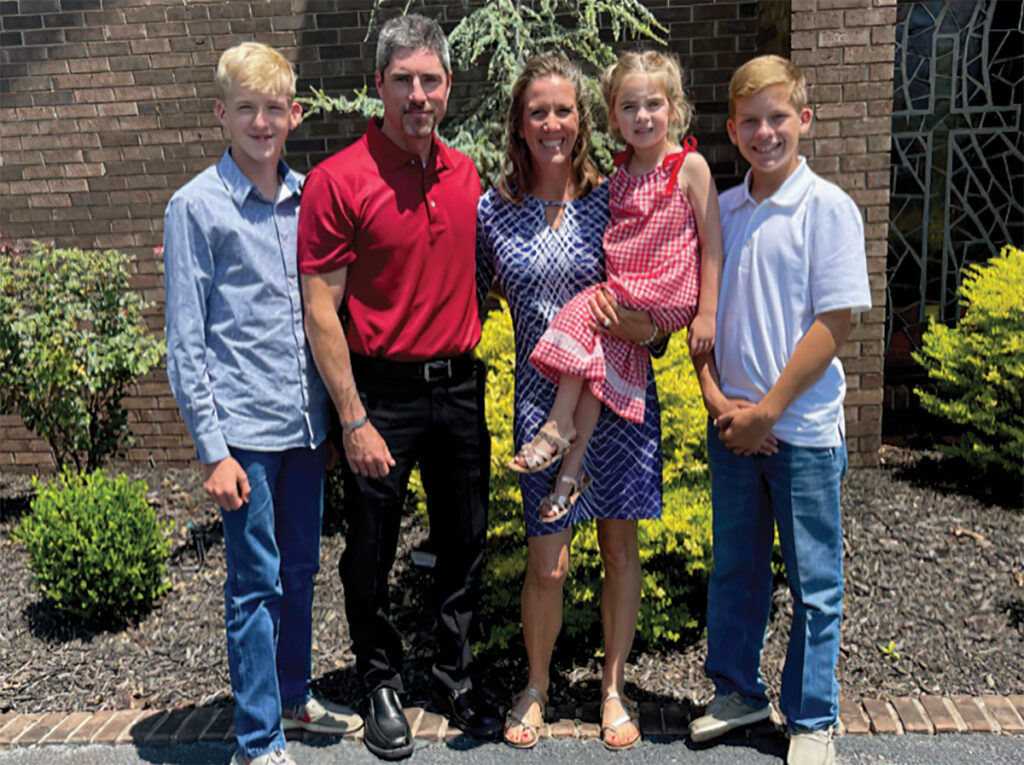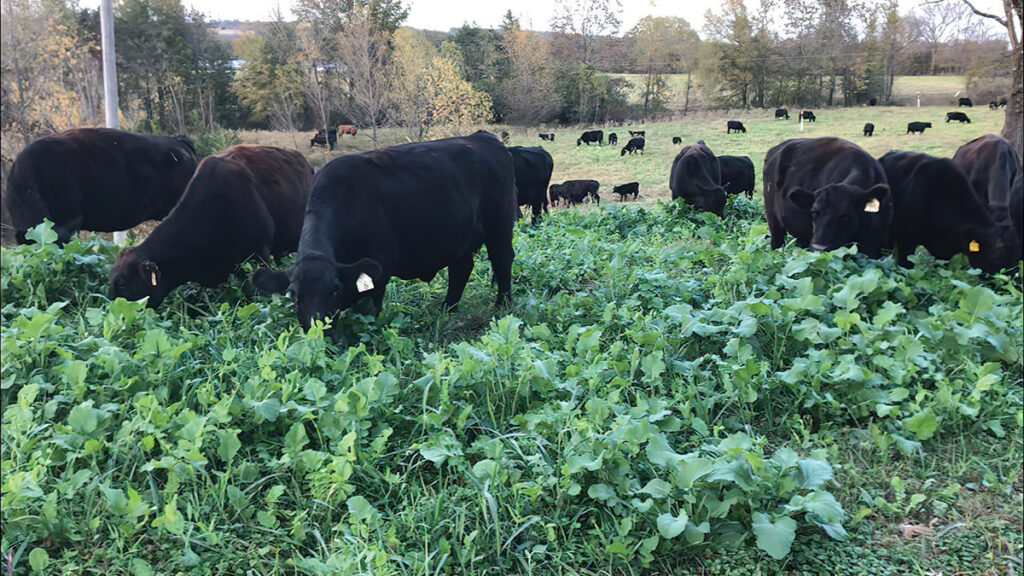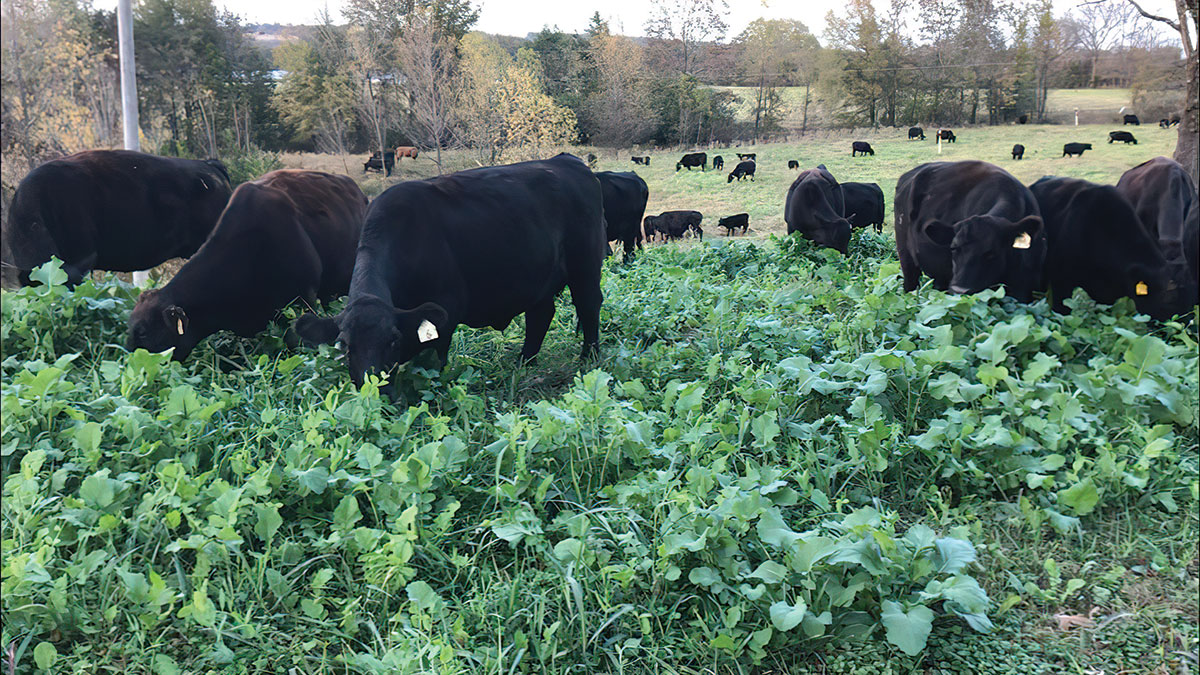
Circle K Angus Farm takes an all-natural, holistic and organic approach to beef production
OZARK, ARK. – What started as a way for the Keisler family to raise their own beef in 2005 has evolved into a thriving specialty beef market and a new way of life for the Ozark, Ark., cattle producers.
“We aren’t multi-generation farmers,” Daniel Keisler, owner of Circle K Angus Farm, said. “For us, it started because we had some land, and I wanted to raise a little better quality protein. We started getting into it, then family members and a few friends wanted in, so one beef turned into four or five. I figured I could take care of 15 just as easy as I could four or five.”
The Keisler family’s beef operation continued to grow over the years, but everything changed in 2011.
“My wife Jessica was diagnosed with breast cancer,” Daniel explained. “It was two years of chemo, radiation and surgery. We got the all-clear, and two months later, she notices some lymph nodes swell up, and sure enough, it’s back.”
Daniel said he and Jessica decided not to go through the same process she endured with her initial diagnosis and opted to seek a holistic treatment.
“Through some friends, we found a natural homeopathic doctor, and long story short, the plan was going to be to detox and rid every kind of chemical, every pesticide, every herbicide, and buckle down,” he recalled. “We went full bore in a natural, homeopathic treatment.”
During the transition, it was proving difficult to find foods that were “just a little above” organic that were naturally raised, nutritious and affordable. The family built a small greenhouse and began growing their own vegetables and working with their garden soil.
‘At first, we were just going to buy foods, but they were scarce,” Daniel said. “If we did find it, we didn’t find it the next time. That led us to do lots of extensive research on soil and animal health.”
That research led to Daniel changing how he raised cattle and beef as well.
“My philosophy and outreach to people is that we can do a lot better for our planet, our environment, and our animals, our soil and our people; we can do better,” Daniel said.
Within three months, Jessica was cancer-free.
“It lit a fire under us, and we had faith in this approach and the faith in the doctors when we saw the results,” Daniel said. “This is now our passion and are 11 1/2 years cancer-free and, praise the Lord, healthy as a horse.”
Today, the Circle K Angus Farm follows a holistic, organic approach to its farming operation, including about 100 head of grass-fed and finished Angus cattle on 100 owned and 80 leased acres. All of the calves harvested are from cattle raised on the farm from birth from their closed herd.
“After a decade, we finally have a herd that is matched to our environment, a very fertile herd that will calve on time and raise a calf that will be 50 percent of their body weight at weaning, and they are going to do it all on grass,” Daniel said. “There are lots of genetic lines that will do what we do, and a lot of people are doing it with South Polls and Red Devons, but we chose Angus because Angus really started it all. Angus has been foraged-developed with lower inputs from the beginning, and the breed has been culled to produce an animal that will marble and finish on forages. In my opinion, there are only three or four types of cattle where you can have a superior eating experience, and I think Angus has done a better job with that.”
Daniel said producers need to look below the surface of their farm.

“There is as much life in soil as there is on soil,” he said. “We don’t want to ever really disturb the soil, so we don’t till or break it. We want to keep a living root in the ground as much as possible, and we want forage covering the soil. Everything that is collecting photosynthesis is pumping life into the soil.
“In the fall, we go in and no-till drill in annuals for forage — wheat, rye, oats and turnips. We do a very strong and diversified mix, all of which will have different style roots, different root depths and capture different elements from the atmosphere. It really pumps and feeds life to the soil.”
Additionally, an array of legumes are planted annually to improve the nitrogen levels in the soil and diversity grazing.
“In the winter, we are going to have vetch, winter peas and others,” Daniel explained. “People ask what we use for fertilizer; we use our forages and our cows.”
On his farm, Daniel said the soil was depleted, compacted and eroding, which was not only adverse for growing quality forages, it meant his soil had no life under it.
“We had no dung beetles, we had no Earthworms, no micro grinial fungi, we didn’t have enough of anything,” he said. “We want to manage our cattle and our forage in a way we are constantly keeping enough leafy material to photosynthesize and getting rid of any synthetics, while promoting life and letting the land rest through rotational grazing. Over time, that life builds back, and you have life that brings back the vitamins and minerals in the soil, and everything is working in an ecosystem that works well for the farmer. When you have cattle that aren’t eating in the dirt, the soil life is good, and you have as many beneficial insects as you do pests, it keeps things in order. It’s that whole circle of life.”
“There is as much life in soil as there is on soil. We don’t want to ever really disturb the soil, so we don’t till or break it. we want to keep a living root in the ground as much as possible, and we want forage covering the soil. everything that is collecting photosynthesis is pumping life into the soil.
— Daniel Keisler
The entire farm is used for grazing, so the Keisler’s source what little hay they need locally, but thanks to stockpiling forages, there are only a few weeks when cattle require hay.”
While holistic, organic, grass-finished beef is their biggest seller, the Keislers also offer some grain-finished beef.
“I already had more than 300 customers on a grain-finished, antibiotic and hormone-free beef,” Daniel said. “When we started switching, about 50 percent of those customers gave the grass-fed a try and heard our story, and they swapped over. The other 50 percent said they loved us and the story, but they wanted to stay with what they always provided them. We still raise about 10 to 12 out of 100 a year that are still a supplement-fed grain. They are marketed as that and labeled as that. We still have a good 40, 50 customers who are still on the grain, but in the next year or two it will be phased out.”
Daniel added all of the cattle are raised in the same manner until those grain-finished calves are moved to a different pasture.
As their herd and approach to agriculture changed, so did their meat sales. They initially began selling quarters, halves and wholes, but as their customer base grew, they had to change their business plan slightly.
“We had at least 200 customers doing the bulk, but then a lot of people who would reach out to us said they didn’t have the freezer space,” Daniel said. “We finally started implementing some bundles.”
Circle K Angus Farm offers multiple bundle choices to customers of both grass-grass and grain-finished beef.
“People can go online and purchase what they want,” Daniel explained. “We are going to be rolling out a monthly subscription program, so they don’t have to go back to the website, log in and reorder..”
To complement their beef, the Keislers also have a pasture-based Berkshire pork operation.
“They are raised like the cattle, but they do get some supplemental grain, which is organic, and they don’t get a lot of it,” Daniel said. “We have forages for them in the summer with things like peas, radishes and turnips. They will forage, plus they will eat what’s created from it. We rotationally graze them as well and keep them in a smaller rotation. Before they leave a field, we will reseed it by hand and give the pigs a day to work it into the soil for us, and then we move them on. Every time they come back to that paddock, which maybe 45 to 60 days, whatever we planted is ready to harvest.”
Pork produced at the farm is also available to customers through the farm’s website, and can be bundled with beef cuts. Plans for the farm include adding sheep and chickens.
What started with a single beef for family used has changed tremendously for the Keislers, but Daniel said his customers are looking for the same thing he wanted for his family all those years ago, and he is glad his family can give them what they are looking for.
“People want nutritious, Earth-friendly foods,” he said.







